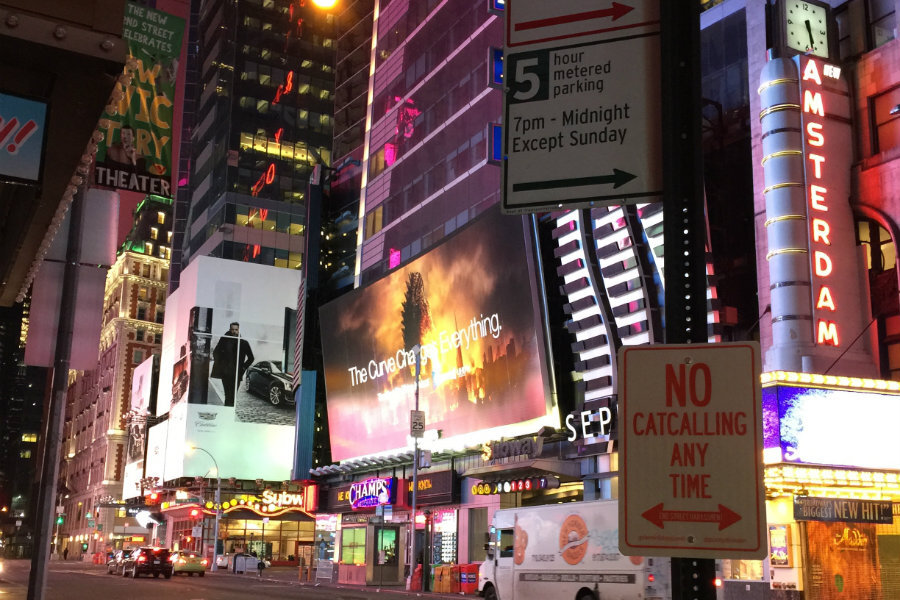‘No Catcall Zones’: A campaign about NYC street harassment
Loading...
Parts of New York City are now “No Catcall Zones.”
The street signs started popping up in Brooklyn and Manhattan over the weekend as nonprofit clothing company Feminist Apparel began its bid to raise awareness and provoke discussion around street harassment – one of the most prevalent and least acknowledged forms of sexual violence in America and around the world.
“Across three years I’ve received hundreds of stories from women in 30 countries detailing the sexually explicit comments, following, groping, whistling, and public masturbation that men impose on them, simply because they are female and occupy public space,” Holly Kearl, founder of the nonprofit advocacy group Stop Street Harassment, wrote for The Christian Science Monitor in 2011.
Indeed, the data, while limited, shows that street harassment happens all the time.
In the United States, two out of three women said that they have experienced street harassment in one form or another, according to a 2014 report by Stop Street Harassment and consumer information firm GfK.
The same study found that more than half of all women surveyed had been verbally harassed, while more than 40 percent said they had been followed, flashed, groped, or otherwise subjected to physical harassment.
Separate surveys conducted in Canada, Croatia, and Poland all found that at least 80 percent of female respondents had experienced street harassment, according to Hollaback!, an international anti-street harassment movement. A study of students at the University of London also showed that more than 50 percent said they had either personally experienced harassment or seen it happen to someone else.
Such pervasiveness is due, in part, to an attitude of tolerance for the problem.
“Many people, especially men, dismiss and undermine these claims [of harassment], wondering why women make a fuss when it’s ‘done in good fun,’ when it’s just ‘boys being boys,’” journalist and ethics expert Tauriq Moosa wrote for The Daily Beast. “Yet, dismissal is just an excuse for men to continue this entitled behavior – whether in childish, terrifying online rejections or cat calling.”
That narrative, in which men force women to treat harassment as a compliment, needs to be countered, Mr. Moosa continued. In his op-ed, he urged men to respect women’s space and bodies, and to recognize that unwanted comments make environments "less safe, less welcoming, and more a minefield to negotiate personal freedom.”
At the same time, women need to take a firmer stand.
“We need to change the society that lets street harassment occur,” Stop Street Harassment’s Ms. Kearl wrote. “We must challenge comments, forms of media, and policies that disrespect and discriminate against women. We must challenge all gender-based violence and harassment; it’s all interrelated.”
Feminist Apparel’s “No Catcalls” campaign – the first to be funded by t-shirt sales on the company's website and done in partnership with Philadelphia-based guerrilla activist group Pussy Division – seeks to accomplish some of that.
“Awareness-building and dialogue-creation surrounding feminist issues is at the core of our nonprofit's mission,” Alan Martofel, Feminist Apparel’s production coordinator, said in an email to the Monitor.
He added: “There are currently over 50 signs up… We hope to get at least one sign up in each borough by the end of the week, as street harassment and catcalling is obviously a universal issue not contained to any one neighborhood.”
The project kicked off International Anti-Street Harassment Week this year, which began April 12.








